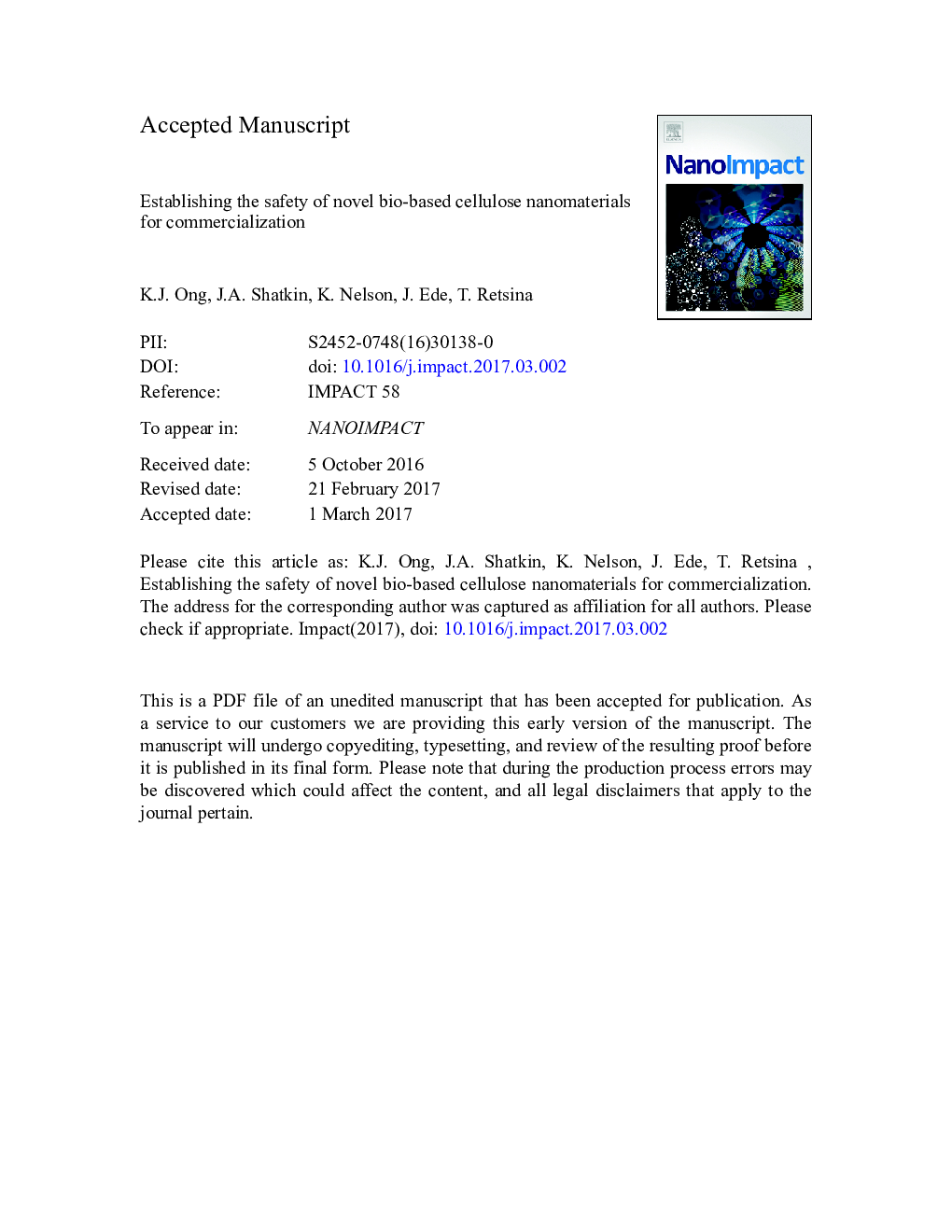| Article ID | Journal | Published Year | Pages | File Type |
|---|---|---|---|---|
| 5560751 | NanoImpact | 2017 | 28 Pages |
Abstract
In the commercial development of novel nanoscale materials, a proactive approach toward safe commercialization requires assessment of material safety for manufacturing, in product use and for environmental impacts. The goal of this study was to design an industrially-relevant testing strategy and develop key data on lignin-coated cellulose nanomaterials to evaluate their safety before wide-scale market introduction and subsequent commercialization. The testing plan developed to evaluate BioPlus® lignin-coated fibrils (L-CNF) and BioPlus® lignin-coated crystals (L-CNC) considered a range of potential uses, and employed a variety of standard and tailored protocols to characterize physico-chemical properties, human health effects and environmental fate and toxicity. For human health studies, acute oral toxicity testing as well as dermal and eye irritation studies were completed. Results reveal no oral, dermal or ocular toxicity following L-CNC and L-CNF exposure at the highest doses tested. Testing conducted to evaluate potential environmental effects included aquatic toxicity testing of bacteria (Vibrio fisheri), algae (Pseudokirchneriella subcapitata), invertebrates (Daphnia magna), and vertebrates (Danio rerio). A unique aspect of the study was that in general, testing was performed at environmentally relevant concentrations. Virtually no toxic effects were reported for either L-CNC or L-CNF in these tests, even at artificially high concentrations that could not feasibly occur in the environment. Together with published studies examining the effects of related and conventional substances, these results demonstrate that L-CNC and L-CNF are relatively non-toxic for the broad range of endpoints considered, much like their conventional cellulosic counterparts. These results were anticipated, due to the ubiquity of cellulose in commerce and in the environment, however publication of such negative results is rare, yet critically important to further understanding of the disposition of commercially relevant nanoscale materials.
Keywords
Related Topics
Life Sciences
Environmental Science
Health, Toxicology and Mutagenesis
Authors
Ong K.J., Shatkin J.A., Nelson K., Ede J.D., Retsina T.,
